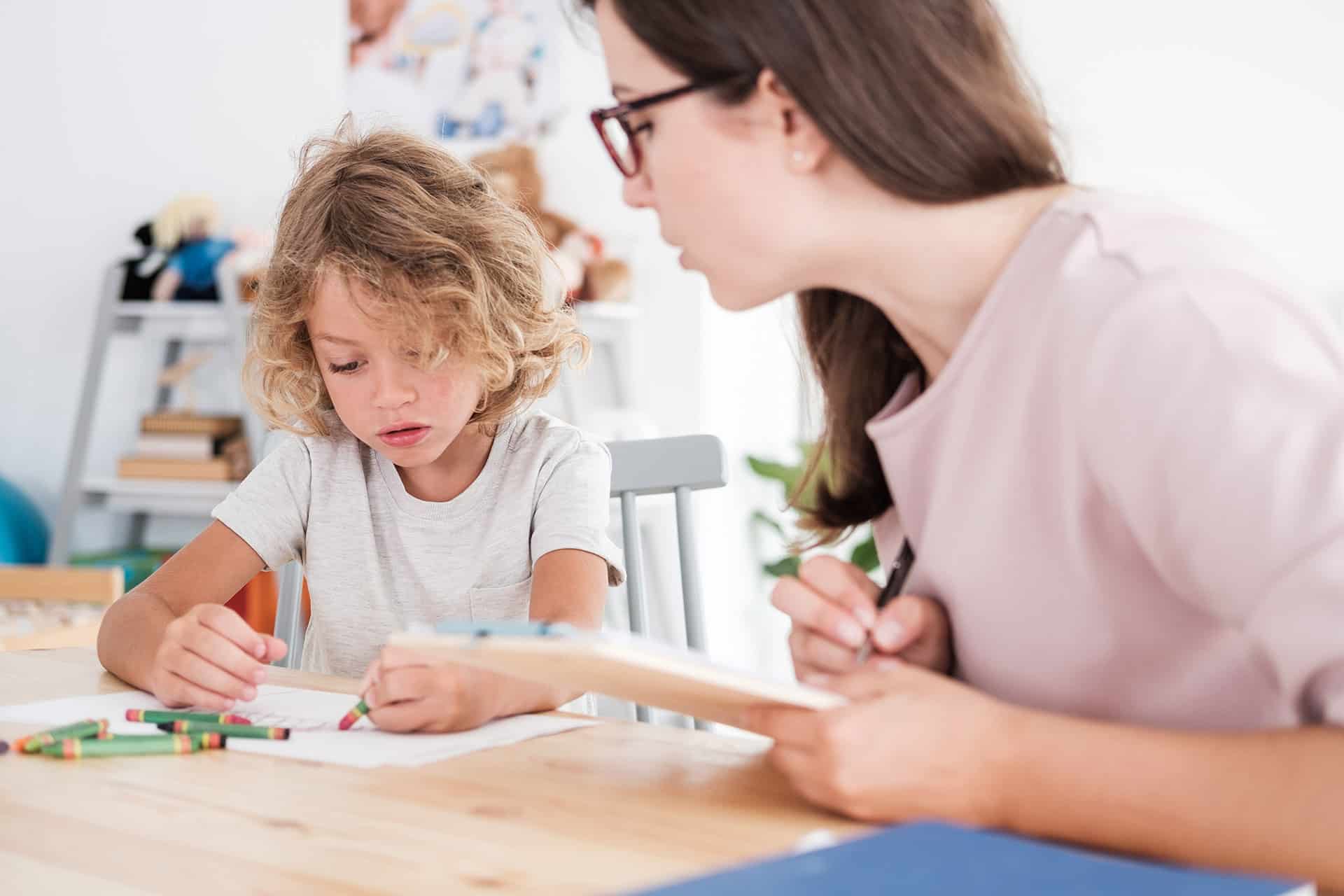
Speech-Language Therapy
Speech-Language Therapy Treatment Services
Prospective Client Information Form
"*" indicates required fields
Our Approach to Speech-Language Therapy Treatment
Our unique treatment approach combines the expertise of speech-language pathologists with evidence-based treatment methods based on the principles of Applied Behavior Analysis. Speech-language therapy sessions are conducted by an SLP or speech-language pathology assistant (SLPA) based on an integrated plan of care developed by the licensed SLP. A speech-language plan of care is based on a comprehensive evaluation conducted at the onset of therapy to determine diagnosis and treatment and is signed by the child’s physician, and shared with parents. Comprehensive evaluations are conducted annually. Therapy sessions may include remediation of speech, language, feeding and/or social skill difficulties.
About Speech-Language Therapy
We offer speech-language therapy for children who have difficulties with speech, language, communication, social skills, eating, and drinking. The speech-language pathologists (SLPs) at Ally Pediatric Therapy target a variety of speech and language challenges, such as but not limited to:
- Lack of or delays in social-communication
- Limited verbal skills
- Articulation errors or error patterns
- Fluency or stuttering
- Receptive and/or expressive language
- Language processing
- Problem-solving
- Pragmatic or social language
- Feeding difficulties
Listed below are a few examples of speech-language therapy goals and activities:
Language: For an early learner, the therapist may interact with the child in a play activity using toys to facilitate expressive language. The child may reach for a car, the therapist says “car,” and the therapist provides access to the car after the child imitates the word. To work on receptive language, the therapist might say, “give me car” and prompt the child to give the car. For a more advanced learner, the therapist may use an iPad social skills application to build higher-level language skills, such as interpreting and responding appropriately to social situations.
Speech: The therapist uses play to facilitate the production of sounds, words, and sentences. The therapist may model the sound “b” and use ABA principles to effectively shape that sound. Eventually, the child will make an attempt, the sound “bah” to request the ball.
Your child may be a candidate for speech, language, and/or feeding therapy if he/she exhibits any of the following:
- Has no speech at all (non-speaker)
- Says some sounds but cannot form words
- Forms some words but can’t put together phrases or full sentences
- Speaks in full sentences, but sometimes/always uses phrases from movies, songs, or video games
- Does not communicate wants or needs
- Cannot produce certain sounds correctly
- Leaves sound off of words
- Repeats questions you ask instead of answering them
- Gets frustrated when not understood
- Is in an ABA or school-based autism program and is not making adequate progress in speech skills
- Is in an ABA or school-based autism program and does not have an adequate communication system to get basic needs met, despite the ability to learn new words (i.e., is learning words but not learning to consistently use them to request desired items or activities)
- Uses words to communicate consistently, but when tries to put words together, they are not clear
- Speaks too quietly or loudly
- Has difficulty with mealtimes and/or is a selective eater
- Does not use utensils
- Has difficulty drinking from an open cup or straw
- Lacks nutritional categories such as fruits, vegetables, or proteins
Benefits of an Integrated Approach
We believe in doing what is best for the child and strive to deliver the highest quality treatment for our clients. Two critical components of high quality treatment are training and communication. To complement a clinician’s area of expertise, every clinician at Ally is taught foundational ABA and Speech principles, enabling each child’s team to communicate effectively. Supervising clinicians meet regularly to ensure appropriate progress is being made toward goals in each child’s treatment plan.
Our ultimate goal is to improve the quality of life for every child we work with. Doing that requires us to work together as a team, and we believe that we’re stronger as an integrated, coordinated group.
Unified
Every employee is trained in ABA and Speech principles, ensuring a comprehensive treatment plan that reflects the unique needs of each child.
Efficient
The collaboration of our staff reinforces what works best for each child across every discipline, maximizing progress and minimizing setbacks.
Effective
Outcomes matter. We work together because collaborating produces the most meaningful learning for the children we support.

Get A Free Consultation
Our team will set up a time to discuss your family’s unique needs and help you navigate the process of obtaining the best services for your child. We understand the stress that can come with finding services for your child and we want to support you in any way we can throughout this process.